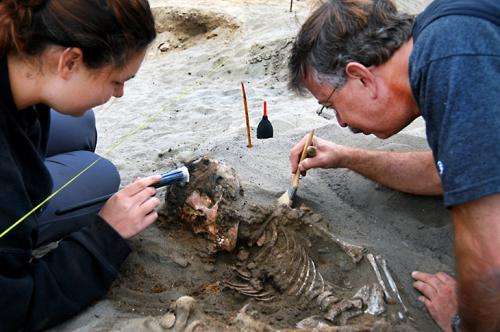Peruvian dig reveals sacrificial mystery

Tulane University physical anthropologist John Verano has spent summers in Peru for the last 30 years, digging for ancient bones and solving their secrets. But his most recent work focuses on a unique archeological discovery: a ritual sacrifice of children and young llamas dating back 600 years.
"This is unusual, and not what we've seen before," Verano said, "especially on the coast of Peru."
In June he traveled to the Peruvian coastal village of Huanchaquito to assist with new excavations at the site where Gabriel Prieto, a Peruvian archeologist, in 2011 found the remains of 42 children who were sacrificed in a religious ceremony along with 76 llamas. The area was once part of the Chimú state, which dominated most of coastal Peru from about 1100 until 1470 A.D., when it was conquered by the Inca empire.
This year, Prieto and Verano expanded the dig and completed the study of children's remains excavated in 2011 with support from the National Geographic Society and the Stone Center for Latin American Studies at Tulane.
Their latest excavation uncovered numerous additional sacrificial victims, which will allow for a more detailed reconstruction of this unusual event, Verano said. The researchers think that the sacrifice may have been an offering to the sea, or a response to severe flooding brought on by an El Niño event, and that the llamas may have been intended to transport the victims to the afterlife.
"It's not a place where you'd think to look," Verano said of the site, located on a sandy ridge 100 yards from the beach. With erosion and construction disturbing the site, the villagers in Huanchaquito "noticed these bones coming out of the sand."
Some of Verano's previous discoveries in Peru have revealed adults who were held captive and killed, "but usually not children," he said.
Multiple laboratories are analyzing bones and teeth discovered at the site. More details on the find and related studies will come later, Verano said. "What it means exactly, I'm not sure. But it is an exciting discovery."
Provided by Tulane University
















